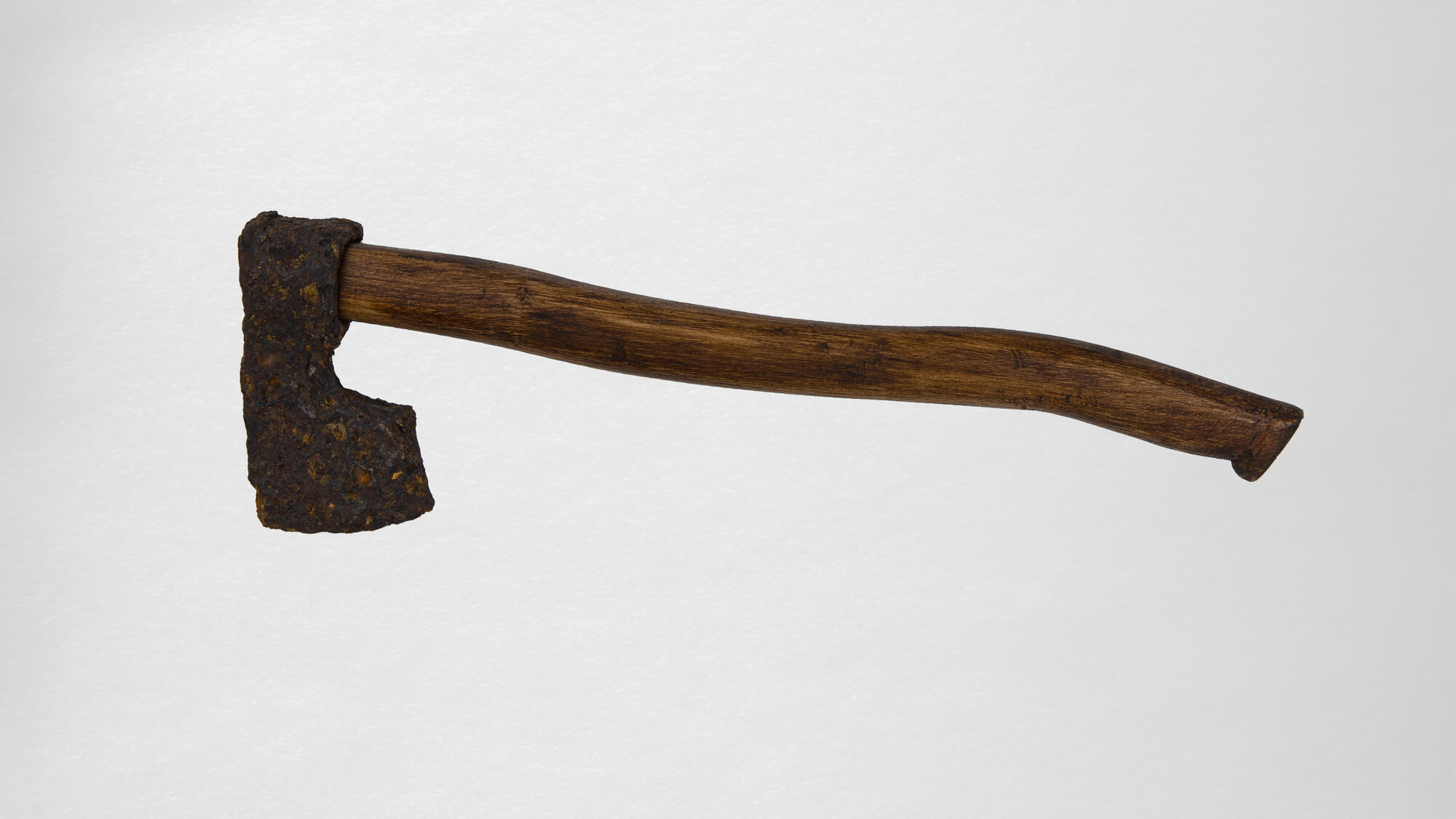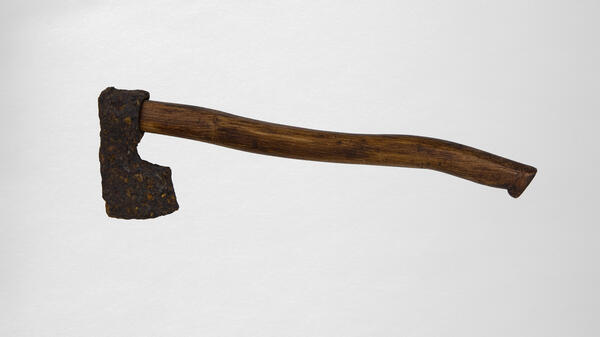The Radogoshch Museum houses a battle-ax made around the 16th — 17th centuries, presumably in the Polish-Lithuanian Commonwealth. This country appeared in 1569 because of the unification of the Kingdom of Poland and the Grand Duchy of Lithuania.
The ax was used for close combat. The Polish axes could look like Czech chekan (a military hammer) or South Scandinavian cutting weapons. The ax with a short hilt was a light fighting ax. In addition, warriors used heavy armor-piercing axes.
The Starodub territory, which included Pogar, was numerously attacked by neighboring countries during the 16–17th centuries. It was also burned down by Zaporozhian Cossacks and Crimean Tatars.
In 1618, according to the Truce of Deulino, Radogoshch (modern Pogar) and its surroundings became part of the Polish-Lithuanian Commonwealth.
The ax was used for close combat. The Polish axes could look like Czech chekan (a military hammer) or South Scandinavian cutting weapons. The ax with a short hilt was a light fighting ax. In addition, warriors used heavy armor-piercing axes.
The Starodub territory, which included Pogar, was numerously attacked by neighboring countries during the 16–17th centuries. It was also burned down by Zaporozhian Cossacks and Crimean Tatars.
In 1618, according to the Truce of Deulino, Radogoshch (modern Pogar) and its surroundings became part of the Polish-Lithuanian Commonwealth.



